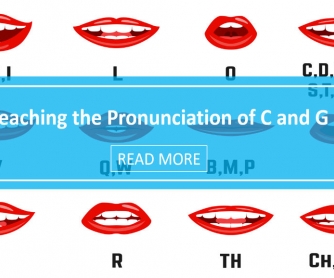In English, there are letters that represent more than just one sound. Two examples of this are the letters C and G. Both of these letters represent two sounds that can be referred to as hard and soft.
| Letter | Hard Sound | Soft Sound |
| C | /k/ | /s/ |
| G | /g/ | /d3/ |
Because of the fact that these letters can be pronounced differently, here are some pronunciation rules to help teach your students when to use what sound.
The basic rules can be explained as followed:
If C/G is followed by A, O, or U, then it makes the hard sound.
If C/G is followed by E, L, or Y, then it makes the soft sound.
Here are some examples of each rule:
C + A → candy, cake, arcade
G + A → game, gap, gate
C + O → con, cop, become
G + O → got, gone, good
C + U → cuddle, cube, cub
G + U → guy, gulp, guilty
C + E → cell, celebrate, center
G + E → gem, angel, gentle
C + I → circle, cinnamon, decide
G + I → ginger, giant, engine
C + Y → cyber, recycle, bicycle
G + Y → gym, apology, gypsy
Here are some great resources from BusyTeacher.org to help you with teaching this:
P.S. If you enjoyed this article, please help spread it by clicking one of those sharing buttons below. And if you are interested in more, you should follow our Facebook page where we share more about creative, non-boring ways to teach English.








